Is It Possible to Achieve Hair Regrowth without Minoxidil? Let’s Find Out!
Is It Possible to Achieve Hair Regrowth without Minoxidil? Let’s Find Out!
Are you tired of hiding that receding hairline or thinning patches on your scalp? Are you not quite sold on the idea of using Minoxidil to stimulate hair regrowth? Well, we have great news for you! In this blog post, we will explore alternative methods and treatments that may just be the perfect solution for achieving luscious locks without relying on Minoxidil. So, grab a cup of coffee and get ready to embark on a journey towards discovering whether it’s possible to achieve hair regrowth without the use of Minoxidil. Let’s dive in and uncover the secrets together!
Introduction to Hair Loss and Minoxidil
Hair loss is a common problem that affects millions of people worldwide. While it is a natural part of the hair growth cycle, excessive hair loss can be distressing for many individuals. There are various causes of hair loss, including genetics, hormonal changes, medical conditions, and lifestyle factors.
One of the most widely used treatments for hair loss is minoxidil. It is an over-the-counter medication that comes in the form of a topical solution or foam. Minoxidil was initially developed as a blood pressure medication but was later found to have hair growth-promoting effects.
Minoxidil works by dilating small blood vessels in the scalp, which increases blood flow and delivers essential nutrients to the hair follicles. This process stimulates cell growth and prolongs the anagen (growth) phase of the hair cycle. Ultimately, this results in thicker, longer, and healthier-looking hair.
The effectiveness of minoxidil has been proven in numerous clinical studies. It is one of only two FDA-approved medications for treating androgenetic alopecia (male or female pattern baldness). However, some individuals may not find success with minoxidil due to various factors such as age, type of hair loss, or underlying health conditions.
In addition to its proven efficacy in promoting hair regrowth, minoxidil also has other advantages compared to other treatments for hair loss:
1) Easy accessibility: Minoxidil can be purchased at most online retailers Shopuskart.
2) Non-invasive: Unlike surgical procedures or oral medications that may have significant side effects on other parts of the body, minoxidil is applied topically only on the affected area.
3) Minimal maintenance: Once applied daily as instructed by your doctor or according to product labeling recommendations (usually twice per day), you can expect minimal additional effort in maintaining your regimen.
However, like any medication, minoxidil may have some potential side effects such as scalp irritation or increased facial hair growth. These side effects are usually mild and temporary.
While minoxidil is a highly effective treatment for hair loss, it may not be suitable for everyone. That’s why it is essential to understand all your options before deciding on a treatment plan. In the next section, we will discuss other hair regrowth methods that can be used in conjunction with or as alternatives to minoxidil.
The Science Behind Hair Growth
The process of hair growth is a complex and intricate one, influenced by a variety of factors including genetics, hormones, and overall health. While many people turn to topical treatments like Minoxidil in their quest for hair regrowth, it’s important to understand the science behind hair growth and how it can potentially be achieved without the use of medications.
At its core, the growth cycle of our hair follicles consists of three main phases: anagen (growth), catagen (transition), and telogen (resting). The anagen phase can last anywhere from two to eight years, during which time our hair grows at a rate of about half an inch per month. This phase is followed by the catagen phase, which lasts for around two weeks and marks the end of active growth. We enter the telogen phase where our hair strands rest for approximately three months before falling out and making room for new ones in the next anagen phase.
The key hormone involved in regulating this cycle is dihydrotestosterone (DHT), which is synthesized from testosterone with the help of an enzyme called 5-alpha-reductase. DHT plays a crucial role in sexual development but also has been linked to male pattern baldness as it can shrink or miniaturize hair follicles over time. This process is known as follicular miniaturization.
While genetics do play a large role in determining whether someone will experience balding or thinning hair due to elevated levels of DHT, certain lifestyle factors can also contribute. Stress, poor diet, lack of exercise, and inadequate sleep have all been linked to increased levels of inflammation within the body that may contribute to accelerated follicular miniaturization.
Fortunately, there are steps you can take to potentially slow down this process and promote healthy hair growth without resorting to medications such as Minoxidil. Eating a balanced diet rich in vitamins A, B, C, D, and E as well as minerals like iron and zinc, can provide your body with the necessary nutrients to support healthy hair growth. In addition, regular exercise and stress management practices can help regulate hormone levels and reduce inflammation in the body.
While Minoxidil may be a popular option for those seeking to regrow their hair, it’s important to understand the underlying science behind hair growth and potential contributing factors that may slow down or accelerate this process. By making certain lifestyle changes and taking care of our overall health, we can potentially achieve hair regrowth without relying on medications.
Natural Ingredients That Promote Hair Growth
Natural ingredients have been used for centuries to promote hair growth and improve the health of the scalp. These ingredients are derived from plants and herbs, making them safe and free from harsh chemicals. They work by nourishing the hair follicles, promoting blood circulation in the scalp, and stimulating hair growth.
One of the most popular natural ingredients for hair growth is aloe vera. This plant has been used for its medicinal properties in many cultures around the world. Aloe vera contains enzymes that can repair dead skin cells on the scalp, which in turn promotes healthy hair growth. It also has anti-inflammatory properties that can help soothe an irritated scalp, reducing dandruff and other scalp conditions.
Another effective natural ingredient is coconut oil. This versatile oil not only moisturizes and strengthens the hair strands but also penetrates deep into the follicles to promote healthy hair growth. Coconut oil contains lauric acid, which binds to protein in hair strands, helping to protect them from damage and breakage.
Rosemary oil is another potent natural ingredient that can stimulate hair growth. It works by increasing blood circulation to the scalp, providing nutrients necessary for healthy follicle development. Rosemary oil also has antiseptic properties that help fight against bacteria on the scalp, reducing dandruff buildup.
Saw palmetto is a herb known for its ability to block DHT (dihydrotestosterone), a hormone associated with male pattern baldness. By inhibiting DHT production, saw palmetto can help prevent further hair loss and promote new hair growth.
Onion juice may sound like an odd choice for promoting hair growth, but it works wonders! Onions contain high levels of sulfur which helps boost collagen production necessary for strong and healthy follicles. It also improves blood circulation to the scalp which delivers important nutrients needed for new cell generation.
Castor oil is another natural ingredient rich in nutrients such as vitamin E, omega-6, and proteins which nourish the hair follicles. It also contains Ricinoleic acid, an essential amino acid that helps balance the scalp’s pH levels, promoting healthy hair growth.
Green tea is not only a refreshing beverage but also a powerful natural ingredient for stimulating hair growth. Green tea contains antioxidants that help boost blood circulation in the scalp, delivering essential nutrients to the hair follicles. It also has anti-inflammatory properties that help soothe an inflamed scalp and promote healthy hair growth.
Harnessing the power of natural ingredients can be an effective way to promote hair growth without using harsh chemicals such as minoxidil. Incorporating these ingredients into your hair care routine can help improve scalp health and stimulate new hair growth for thicker and healthier locks.
Lifestyle Changes to Support Hair Regrowth
Several lifestyle changes can support hair regrowth without the use of minoxidil. By making small adjustments to your daily routine and habits, you may notice positive changes in the appearance and overall health of your hair.
1) Healthy Diet: One of the main causes of hair loss is a deficiency in essential vitamins and minerals. Incorporating foods rich in protein, iron, zinc, and biotin into your diet can promote hair growth. Some examples include lean meats, eggs, beans, leafy greens such as spinach and kale, nuts, avocados, and whole grains.
2) Scalp Massage: Massaging your scalp regularly can stimulate blood flow to the hair follicles and promote hair growth. You can do this using your fingertips or invest in an electric scalp massager for added convenience.
3) Stress Management: Chronic stress has been linked to hair loss. Finding healthy ways to manage stress such as exercise, meditation or yoga can benefit not only your mental well-being but also contribute to healthier hair growth.
4) Avoid Harsh Chemicals: Shampoos containing sulfates and other harsh chemicals can strip the scalp’s natural oils and cause damage to the hair follicles. Opt for gentler shampoos that are free from harmful ingredients.
5) Let Your Hair Breathe: Tight hairstyles like braids or ponytails put constant strain on the roots of your hair leading to breakage over time. Allow your locks to breathe by opting for looser hairstyles or taking breaks between styles.
6) Protect Your Hair While Sleeping: Friction from cotton pillowcases can lead to breakage while you sleep. Switching to a silk or satin pillowcase reduces friction and helps protect delicate strands while you sleep.
7) Stay Hydrated: Drinking enough water is crucial for maintaining strong and healthy tresses. Water promotes proper circulation which delivers necessary nutrients for optimal hair growth.
Making small lifestyle changes such as improving your diet, incorporating scalp massages and stress management techniques, avoiding harsh chemicals, allowing your hair to breathe, protecting it while sleeping, and staying hydrated can all support hair regrowth without minoxidil. Remember that consistency is key when it comes to seeing results with these lifestyle changes. Be patient and stick to these healthy habits for long-term benefits for your hair health.
Alternative Treatments for Hair Loss
While minoxidil is a commonly used treatment for hair loss, there are alternative options available for those looking to achieve hair regrowth without the use of this medication. These alternative treatments range from natural remedies to advanced medical procedures and can provide promising results for individuals struggling with hair loss.
1. Natural Remedies: One popular natural remedy for hair loss is the use of essential oils such as rosemary, peppermint, and lavender. These oils have been shown to improve blood circulation in the scalp, promote healthy hair growth, and reduce inflammation that can contribute to hair loss. Another natural option is incorporating certain vitamins and supplements into your diet, such as biotin, iron, and vitamin D. These nutrients play a crucial role in maintaining healthy hair follicles and promoting new growth.
2. Aromatherapy: Aromatherapy has gained popularity as an alternative treatment for hair loss due to its ability to stimulate the scalp and improve blood flow to the follicles. Essential oils can be combined with carrier oils or added to shampoos or conditioners for easy application.
3. Low-Level Laser Therapy (LLLT): LLLT uses red light therapy to stimulate cellular activity within the follicle cells, promoting new growth at a deeper level than topical treatments like minoxidil. This method is effective in reducing the shedding of existing hairs and promoting thicker, healthier strands.
4. Platelet Rich Plasma (PRP) Injections: PRP injections involve extracting platelets from your blood and injecting them into areas of thinning or balding on the scalp. These platelets contain growth factors that help rejuvenate inactive follicles and promote new hair growth.
5. Scalp Micropigmentation (SMP): SMP is a non-surgical cosmetic procedure where tiny dots of pigment are applied onto the scalp using micro-needles to mimic real individual hairs. This technique can create the appearance of a fuller head of hair and camouflage areas of thinning or balding.
It’s important to note that these alternative treatments may not work for everyone, and it’s crucial to consult with a medical professional before trying any new treatment. Additionally, lifestyle changes such as reducing stress levels, avoiding tight hairstyles and excessive heat styling, and maintaining a healthy diet can also make a significant impact on hair growth.
While minoxidil is known as the most popular treatment for hair loss, there are several alternative options available that may provide satisfactory results without the use of medication. Incorporating natural remedies, aromatherapy, LLLT, PRP injections or SMP into your hair care routine may help combat hair loss and promote healthier-looking locks. However, it’s essential to consult with a healthcare professional to determine the best course of action for your specific situation.
– Scalp Massages
Scalp massages have long been used as a natural remedy for promoting hair growth. The simple act of massaging your scalp can improve blood circulation, stimulate hair follicles, and reduce stress – all of which are important factors in maintaining a healthy head of hair.
When it comes to hair regrowth, one key aspect is the health of the scalp. A healthy scalp provides a favorable environment for hair growth by ensuring that essential nutrients reach the hair follicles. Scalp massages help achieve this by increasing blood flow to the area, delivering vital nutrients to nourish and strengthen the roots.
Additionally, massaging the scalp can help unclog pores and remove any build-up of oils or debris that may be blocking hair follicles. This allows for better absorption of products like shampoos and conditioners, which ultimately leads to healthier and stronger hair.
But how exactly do you go about giving yourself a scalp massage? It’s quite simple actually! You can use your fingertips or invest in a handheld scalp massager tool. Using circular motions, gently massage your entire scalp for 5-10 minutes while focusing on areas where you may experience thinning or balding. For added benefits, you can use essential oils such as peppermint or rosemary oil during your massage – these oils have been found to promote hair growth and improve overall scalp health.
In addition to physical benefits, scalp massages also offer mental relaxation. Stress has been linked to increased production of hormones that hinder hair growth, so taking some time out of your day to give yourself a soothing head massage can help lower stress levels and promote new hair growth.
If done consistently over time, regular scalp massages can yield noticeable results in terms of improving overall hair health and promoting regrowth. However, it’s important to note that while they can certainly aid in strengthening existing strands of hair and stimulating new growth, they may not necessarily be effective on their own for individuals dealing with severe cases of hair loss.
Incorporating scalp massages into your hair care routine can be a simple and effective way to promote hair regrowth without resorting to the use of medications like minoxidil. They offer numerous benefits for both the health of your scalp and overall well-being, making it a worthwhile addition to any hair care regimen.
– Essential Oils
Essential oils have been used for centuries and are popularly known for their many therapeutic properties. These highly concentrated plant extracts are not only beneficial for improving overall health, but they can also work wonders for hair growth. In recent years, essential oils have gained more attention as a natural alternative to minoxidil for treating hair loss.
One of the main reasons essential oils are effective in promoting hair regrowth is due to their ability to increase blood circulation in the scalp. When massaged into the scalp, these potent oils can stimulate blood flow to the hair follicles, which delivers essential nutrients and oxygen that are necessary for healthy hair growth.
Some of the most commonly used essential oils for hair regrowth include rosemary, peppermint, lavender, cedarwood, and tea tree oil. Each of these oils has unique properties that contribute to their effectiveness in combating hair loss. For instance, rosemary oil has been shown to stimulate new hair growth by activating dormant follicles and increasing cellular metabolism. Peppermint oil has a cooling sensation that helps soothe an itchy or inflamed scalp while also nourishing it with its antibacterial and anti-inflammatory properties.
Another benefit of using essential oils for hair regrowth is their ability to balance hormone levels in the body. Hormonal imbalances are one of the leading causes of hair loss, especially in women experiencing postpartum or menopause. Essential oils like clary sage and lavender can help regulate hormones and reduce stress levels, which can contribute to healthier hair growth.
Moreover, many essential oils contain antioxidants that protect against free radical damage on the scalp. This damage can block pores and prevent proper nutrient absorption by the follicles leading to thinning or shedding of hair. The antioxidant properties found in essentials like tea tree oil help cleanse the scalp from impurities while promoting a healthier environment for regrowth.
While there is still ongoing research on using essential oils as a treatment method for alopecia, many studies have shown promising results. In a 2014 study, participants with alopecia areata were given a topical blend of essential oils, and after seven months, 90% showed significant improvement in hair regrowth. This highlights the potential effectiveness of using essential oils as a natural remedy for hair loss.
While minoxidil may be a widely used topical treatment for hair loss, it is not the only option available. Essential oils offer a natural and effective alternative for promoting hair growth without any harsh chemicals or side effects. However, it is essential to note that results may vary from person to person, and consulting with a healthcare professional before incorporating essential oils into your hair care routine is advisable.
– Diet and Nutrition
When it comes to hair regrowth, the importance of diet and nutrition cannot be overstated. A well-balanced and nutrient-rich diet is crucial for achieving luscious, healthy hair. While there are a lot of factors that contribute to hair loss, including genetics and hormonal imbalances, poor diet choices can also play a significant role.
So, what exactly should be included in a hair-promoting diet? Here are some essential nutrients that you must include in your meals for optimal hair health:
1. Protein: Our hair is primarily made up of protein, so it’s essential to ensure an adequate intake of this nutrient for healthy growth. Foods like eggs, chicken, fish, lentils, Greek yogurt, and tofu are excellent sources of protein.
2. Iron: Iron deficiency is one of the leading causes of hair loss in women. This mineral helps carry oxygen to cells throughout the body, including the scalp. Good dietary sources of iron include spinach, lean red meat, legumes, and fortified cereals.
3. Omega-3 fatty acids: These healthy fats help nourish the scalp and promote shiny hair. Sources include fatty fish like salmon or mackerel as well as plant-based options like flaxseeds and chia seeds.
4. Vitamin C: This vitamin aids in the production of collagen – a protein necessary for maintaining strong and healthy strands. Citrus fruits like oranges and grapefruits are rich in vitamin C along with other options such as strawberries, kiwi fruit, bell peppers, broccoli, etc.
5. Vitamin E: It has potent antioxidant properties that protect our cells from damage caused by free radicals – compounds responsible for aging-related conditions such as thinning hair follicles. Vitamin E-rich foods include almonds, oil oil, and avocados among others.
6. Biotin: Biotin plays a crucial role in promoting strong and healthy hair by helping break down proteins into amino acids, which are essential building blocks for hair. Foods such as eggs, nuts, and whole grains are good sources of biotin.
7. Zinc: This mineral is vital for maintaining a healthy scalp and promoting hair growth. Oysters, beef, pumpkin seeds, and lentils are all excellent sources of zinc.
It’s also essential to stay hydrated by drinking enough water throughout the day. Dehydration can lead to dry and brittle hair, making it more prone to breakage.
While incorporating these nutrients into your diet is important for overall hair health, you may be wondering if any specific foods can promote hair regrowth without the use of minoxidil. Unfortunately, there is no one magical food that can promise miraculous results; however, a well-balanced diet with an adequate intake of all essential nutrients can certainly help in improving the condition of your hair over time.
Additionally, avoiding crash diets or extreme restriction of calories is crucial as sudden weight loss or inadequate nutrition can lead to increased shedding of hairs from the scalp.
While it’s not possible to
– Supplements
Supplements have become increasingly popular as a way to promote hair regrowth without the use of minoxidil. These supplements often contain natural ingredients, such as vitamins and minerals, that are believed to nourish the scalp and stimulate hair growth.
One of the most commonly used supplements for hair regrowth is biotin. Biotin, also known as vitamin B7, is an essential nutrient for maintaining healthy hair, skin, and nails. It is believed to strengthen hair follicles and improve the overall health of the scalp. However, research on the effectiveness of biotin for hair regrowth is limited.
Another popular supplement for promoting hair growth is iron. Iron deficiency has been linked to hair loss in some people, so taking an iron supplement may help with regrowth. However, it’s important to consult with a healthcare professional before starting any new supplement regimen since too much iron can be harmful.
In addition to these individual supplements, there are also many multivitamin products specifically formulated for promoting healthy hair growth. These often include a combination of vitamins A, C, D3, E, and various types of B vitamins which all play a role in maintaining healthy scalp and hair.
Other key ingredients found in many supplements designed for hair regrowth include saw palmetto extract and horsetail extract. Saw palmetto has been shown to inhibit the production of dihydrotestosterone (DHT), a hormone that contributes to male pattern baldness. Horsetail extract contains silica which helps strengthen strands of fragile or thinning hair.
While there is no surefire guarantee that taking these supplements will result in significant hair regrowth without minoxidil use or other treatments combined with them; they may be able to provide some benefit by supporting overall scalp health.
It’s important to note that results from taking supplements may vary from person to person based on their unique needs and underlying causes of their hair loss. It’s also essential to choose supplements from reputable sources and consult with a healthcare professional before adding them to your routine.
While there are no guarantees that taking supplements alone will result in significant hair regrowth without minoxidil use; they may provide some benefit by promoting healthy scalp conditions. It’s always important to do thorough research and consult with a healthcare professional before starting any new supplement regimen for hair growth. With patience and consistency, these supplements may be able to support the growth of healthy, strong hair.
– Laser Therapy
Laser therapy, also known as low-level light therapy (LLLT), is a relatively new hair regrowth treatment that has gained popularity in recent years. It involves using red light of a specific wavelength to stimulate hair growth and potentially reverse the effects of hair loss.
The basic principle behind laser therapy for hair regrowth is that the red light penetrates the scalp and stimulates the cells responsible for hair growth. This stimulation helps to increase blood flow to the scalp, which delivers vital nutrients and oxygen to hair follicles. Additionally, it triggers an increase in cell metabolism and protein synthesis, promoting healthier and stronger hair growth.
There are various forms of laser therapy available, including in-office treatments done by a professional or at-home device such as combs, caps, or helmets that emit red light. These devices use low-level lasers or LED lights with wavelengths ranging from 630nm to 670nm, which are considered safe for human skin.
One major advantage of laser therapy is its non-invasive nature. Unlike other treatments like surgery or injections, there are no incisions involved with laser therapy. This means no recovery time or risk of scarring. Many people find laser therapy sessions quite relaxing due to the warmth emitted from the device.
Another benefit is that it can be used on both men and women who experience different types of hair loss. It is effective in treating androgenetic alopecia (male/female pattern baldness), alopecia areata (patchy hair loss), telogen effluvium (thinning all over), and even post-pregnancy shedding.
While some may see results after just a few sessions, others may need more prolonged use before noticing any significant changes in their hair density or thickness. On average, it takes about six months of consistent use before visible results can be achieved.
Although generally considered safe with minimal risks involved, some potential side effects reported include minor discomforts like scalp irritation, dryness, or redness. However, these usually subside after the first few sessions.
It is essential to note that laser therapy does not work for everyone and cannot restore full hair growth in cases of advanced hair loss. It also requires a commitment to ongoing treatment and may be costly, especially if done in the office by a professional.
Laser therapy may be a promising alternative for those who do not wish to use minoxidil or other medications for hair regrowth. Its non-invasive nature and potential effectiveness make it an attractive option for individuals experiencing mild to moderate hair loss. However, as with any medical treatment, consulting with a healthcare professional before starting is crucial to determine if it is suitable for you.
The Role of Genetics in Hair Regrowth
Hair regrowth is a topic that has been studied and debated for decades. While many people turn to topical solutions like minoxidil for hair regrowth, some may wonder if there are natural ways to stimulate hair growth without the use of chemicals or medications. One factor that plays a significant role in hair regrowth is genetics.
Our genetic makeup determines many physical characteristics, including our hair type and color. One of the most visible aspects influenced by genetics is male or female pattern baldness. This type of hair loss is hereditary and can occur in both men and women due to genetic predisposition.
Male pattern baldness, also known as androgenetic alopecia, is caused by a combination of genetic factors and hormonal changes. The root cause of this condition lies in an increased sensitivity to dihydrotestosterone (DHT), a hormone derived from testosterone. DHT affects the hair follicles, causing them to shrink over time, resulting in thinning hair and eventual baldness.
Similarly, female pattern baldness is also attributed to genetics but manifests differently than in men. Instead of receding at the temples like male pattern baldness, women usually experience diffuse thinning all over the scalp. The role of hormones such as estrogen levels also play a part in this type of hair loss.
Genetics can also determine how quickly our hair grows and the length it can reach before falling out naturally. Some individuals have genes that allow their hair to grow faster and longer than others, leading to thicker-looking locks.
On the other hand, individuals with weaker genes for healthy hair growth may be more prone to conditions such as alopecia areata or telogen effluvium – both characterized by sudden patches or overall thinning of the scalp respectively.
While genetics plays a key role in determining our susceptibility to different forms of hair loss, it’s not entirely definitive. Environmental factors such as diet, stress levels, and lifestyle choices also influence hair health and growth. For example, a poor diet lacking essential nutrients can contribute to weak hair follicles that are more susceptible to shedding.
Genetics is undoubtedly a significant factor in hair regrowth. While it may determine our predisposition to certain types of hair loss, other external factors also play a crucial role in maintaining healthy hair growth. By understanding the genetic component of hair regrowth and addressing any underlying conditions or deficiencies, we can take steps towards achieving the desired results without solely relying on medications like minoxidil.
Conclusion: Balancing Expectations and Solutions
After exploring the various options for hair regrowth without minoxidil, it is clear that achieving this goal requires a delicate balance between expectations and solutions.
First, it is important to have realistic expectations when seeking out alternative methods for hair regrowth. Many of these options may not provide the same dramatic results as minoxidil, which has been extensively studied and proven effective in promoting hair growth. It is important to remember that every individual’s body chemistry is unique, and what may work for one person may not work for another.
However, this does not mean that other solutions should be completely dismissed. While they may not provide the same level of effectiveness as minoxidil, some of these alternatives can still help slow down hair loss and promote limited regrowth.
It is also crucial to understand that there is no “one size fits all” solution when it comes to hair regrowth. What works for one person may not work for another. Therefore, it is essential to try different methods and find the one that works best for you. This may involve consulting with a healthcare professional or trying out multiple approaches before finding the right solution.
In addition to managing expectations, being proactive in preventing further hair loss can also play a significant role in achieving successful regrowth without minoxidil. This includes adopting healthy lifestyle habits such as reducing stress levels, maintaining a well-balanced diet with essential vitamins and minerals, and using gentle hair care products.
There are also natural remedies available such as essential oils (e.g., rosemary oil), scalp massage therapy, and herbal supplements (e.g., saw palmetto) that have shown promising results in promoting hair growth while minimizing side effects.
Ultimately, achieving successful hair regrowth without minoxidil requires patience and persistence in finding the right balance between expectations and solutions. It may take time to see visible results, so it is vital to remain consistent and not give up too soon. With the right approach and combination of methods, it is possible to achieve healthier and fuller hair without relying on minoxidil.
Don’t forget to give us a follow on Facebook!

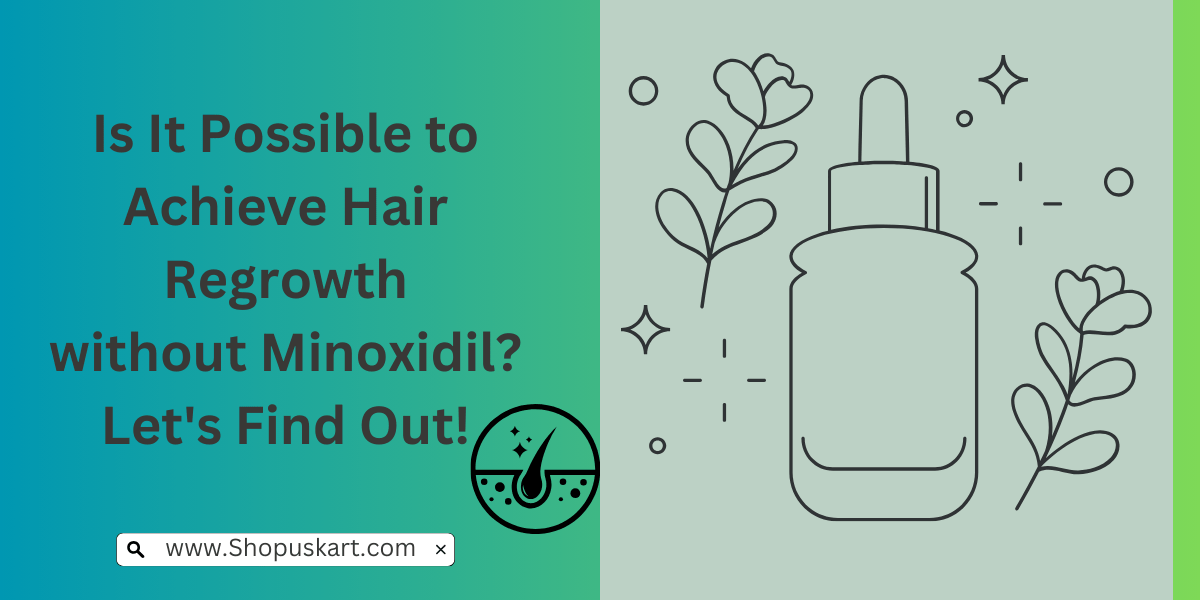
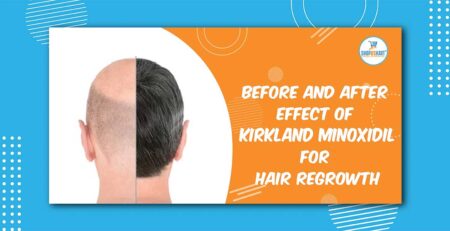
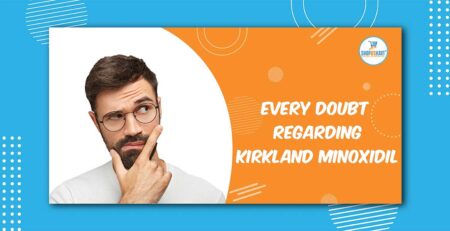
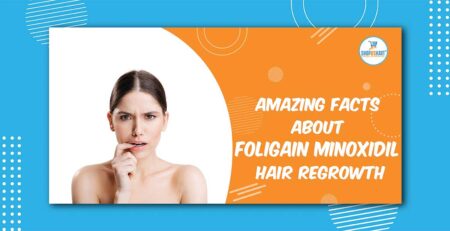
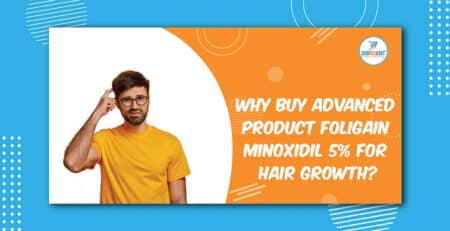

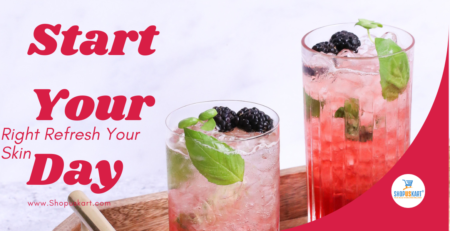
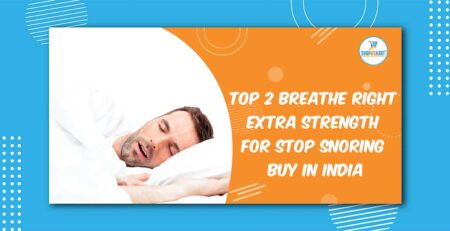
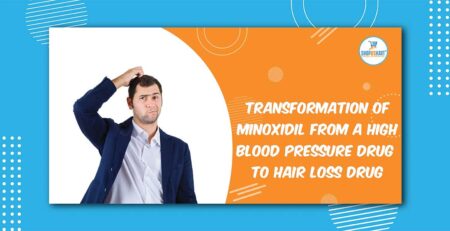
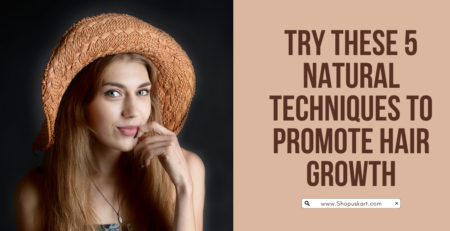
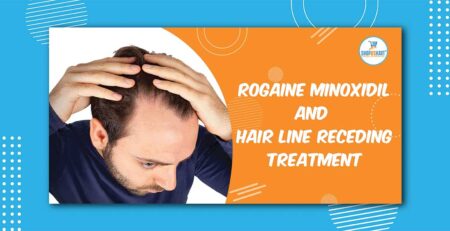
Leave a Reply